PC & VC: Clinical Considerations
This is the third video in our Pulmonary and Ventilator Mechanics Chalk Talk Series, where our goals are to learn how a ventilator works, and how to work a ventilator. In this talk, we build on our newfound understanding of resistance and compliance to investigate the behavior of pressure control and volume control modes when the patient's pulmonary compliance changes. These differences frame the clinical advantages and disadvantages of these modes.
Mode Terminology
In order to set the stage for the discussions in these next few lectures, we start off by getting familiar with the standardized terminology we use to describe ventilator modes. The trigger is how the ventilator decides to start inspiration. The limit is the parameter that defines the behavior of inspiration itself. The cycle variable lets the ventilator know when to switch from inspiration to expiration. And finally, some modes have a servo parameter, which allows the ventilator computer to update its own limit in response to other changes.
Pressure & Volume Control
With the benefit of the terminology above, we review pressure control and volume control modes one more time. As control modes, both are time triggered. Pressure control mode is pressure limited and time cycled, while volume control mode is flow limited and volume cycled.
Next, we compare the clinical advantages and disadvantages of these modes. For a given tidal volume, pressure control mode generally provides a higher mean airway pressure, which is better for oxygenation; a lower peak airway pressure, which is protective against lung injury; and an inspiratory pattern that is more comfortable for patients. On the other hand, volume control mode provides a very stable minute ventilation, which helps to maintain normocarbia; and a lower peak airway flow, which is advantageous in obstructive airway diseases.
Changing Compliance
One of the most important differences between pressure control and volume control modes is their behavior when the patient's pulmonary compliance changes. An analysis of the behavior of our pressure-limited pressure control breaths compared to flow-limited volume control breaths reveals that under pressure control, a decreasing compliance results in a lower tidal volume and minute ventilation, risking hypercarbia. On the other hand, under volume control, minute ventilation is preserved at the expense of an increasing peak pressure, risking barotrauma.
In this lecture, we really solidify our understanding of pressure control and volume control modes, and the advantages and disadvantages of each. Next time, we'll look at the strategies used in more advanced ventilator modes to combine some of the advantages of each.
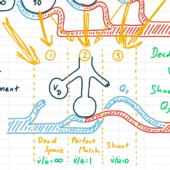
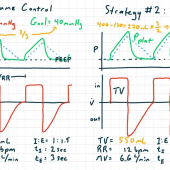
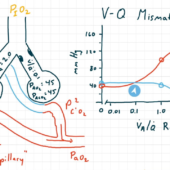
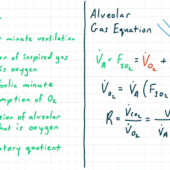
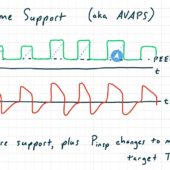
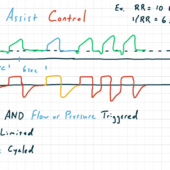
Comments
This post currently has no responses.